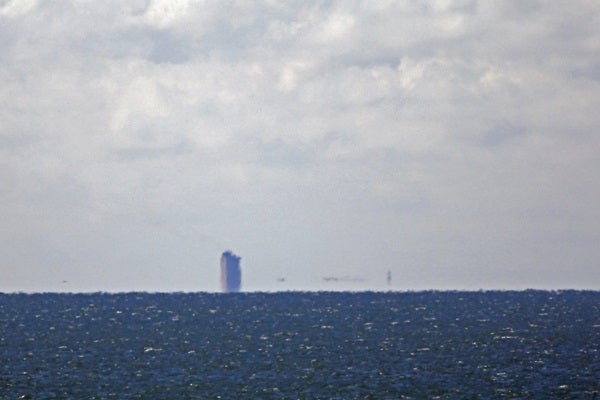This month’s column presents a naked-eye celestial mystery. It’s about seeing a bright star that appears to set. OK, nothing so odd about that. Except in this case the star reappears briefly about a second or two later before slipping beneath the western horizon for good. It’s a puzzling sight that may have several causes, or combination of causes, none of which I am certain are correct.
I’ve glimpsed these springing stars on perhaps three occasions over a period of 20-odd years, so it appears to be an uncommon event. The phenomenon always took me by surprise and caused long moments of fruitless pondering. To date I have observed twice-setting stars only over the long slopes of Mauna Loa volcano, as seen from the summit area of neighboring Kilauea volcano when I was living on Hawaii’s Big Island.
I found the observations curious for two reasons. First, after seeing the phenomenon, I would wait to see if other setting stars would spring back into view, but none ever did. Second, Mauna Loa’s profile (which looks like an overturned plate) covers a few degrees of sky as seen from Kilauea. So the phenomenon does not occur at the horizon where one might expect most weird atmospheric anomalies to happen, but rather some degrees above it.
In October 2016, I was in Eastbourne, England, experiencing unseasonably hot weather. Ships on the distant horizon appeared irrationally enormous while riding above the water’s surface on a cushion of air.
At first glance, it looked as though what I was observing was a classic inferior mirage. In this phenomenon, the ship seemed enormous because an upside-down image of the ship appeared conjoined and beneath the actual ship. Also, the “ships” appear separated from the horizon by a thin band of sky because some of the sky above the real ship is also part of the mirage in its mirror image.
On the Big Island, a temperature inversion (when a layer of cold air becomes trapped beneath a layer of warmer air) is common under trade-wind conditions at heights between 4,000 and 8,000 feet (1,220 and 2,440 meters). Such conditions can lead to superior mirages, ones in which in which an upside down image appears above the original image.
But superior mirages also can make objects from beyond the horizon visible and suspend them in the air. Although rare, city lights normally out of view have appeared floating above the horizon from high northern latitudes — so why not (albeit briefly) light from a bright star that has already set?
Although not at a high northern latitude, Mauna Loa’s summit lies 13,679 feet (4,169m) above sea level. It is an active volcano with a dramatically sharp and smooth profile — one shaped by extensive lava flows that soak up the Sun’s rays during the day only to reradiate the heat into the atmosphere at night.
Adding to this radiative cooling, the mountain’s slopes follow long radial rifts that can in places emit exceedingly hot steam into the cool air above them. It seems possible that either of these thermal effects can affect the density of the surrounding air and set up shifting mirage conditions, which can bend starlight after the star has set and make it briefly jump back into view.
As always, I’d like to hear your own experiences and thoughts. I’d especially appreciate hearing from others who have witnessed this or a similar phenomenon. Send reports to sjomeara31@gmail.com.












